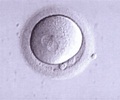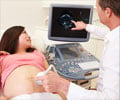Researchers at the Seattle Cancer Care Alliance and University of Washington found that ultrasound has a far higher sensitivity for cancer detection than mammography.

In the 1,208 cases examined, sensitivity for ultrasound was 95.7 percent compared to 60.9 percent for mammography. Ultrasound exams found 22 cancers versus 14 by mammography. For this study, researchers identified all women 30 to 39 years old who presented for diagnostic breast imaging evaluation at SCCA between January 2002 and August 2006. Researchers identified the 1,208 cases in 954 patients.
The findings are published in the Oct. 22 issue of the American Journal of Roentgenology. The study was led by Constance Lehman, M.D., Ph.D., director of radiology at SCCA; professor and vice chair of radiology at the University of Washington; and one of the country''s leading authorities on the use of advanced imaging for breast cancer screening and diagnosis.
"Imaging plays an important role in evaluating women with palpable breast lumps," Lehman said. "Most lumps are not cancer. Ultrasound and mammography help us separate women who need a biopsy from those who can safely be followed or reassured that the lump is benign. In women under 40, ultrasound is better at evaluating breast lumps compared to mammography. Mammography is still our best tool for screening women 40 and older, but targeted ultrasound is our tool of choice in evaluating symptomatic women under 40."
The use of ultrasound in women age 30-39 who have overt breast symptoms is common practice in Europe, where guidelines typically recommend ultrasound as the primary diagnostic imaging tool. Symptoms common to women in this age group include palpable lumps, localized pain and tissue thickening. The risk for malignancy among women in this age group is "small but real," at about 1.9 percent, Lehman said.
"Imaging plays an important role in the diagnostic evaluation of such localized areas of concern because clinical breast examination alone is unreliable in distinguishing benign from malignant lesions," the authors wrote.
Advertisement
Current guidelines in the U.S., in which mammography is recommended as the primary diagnostic tool, are based on prior expert opinion based on sparse information, the authors reported. Lehman said that the guidelines, issued by the American College of Radiology, should be reconsidered given the current study''s findings.
"The American College of Radiology develops practice guidelines based on clinical research whenever possible. This specific area has been challenging as there are sparse data to guide practice," Lehman said. "Our study supports the ACR''s commitment to ensure we are choosing our imaging tools wisely, avoiding radiation when possible, while guiding safe and best practices for our patients."
Advertisement
Source-Newswise















